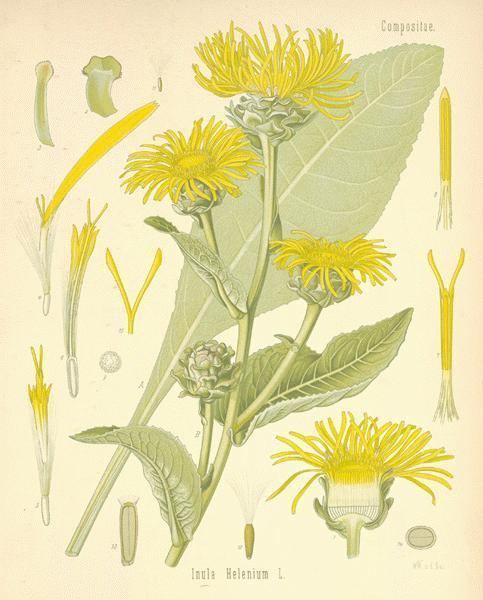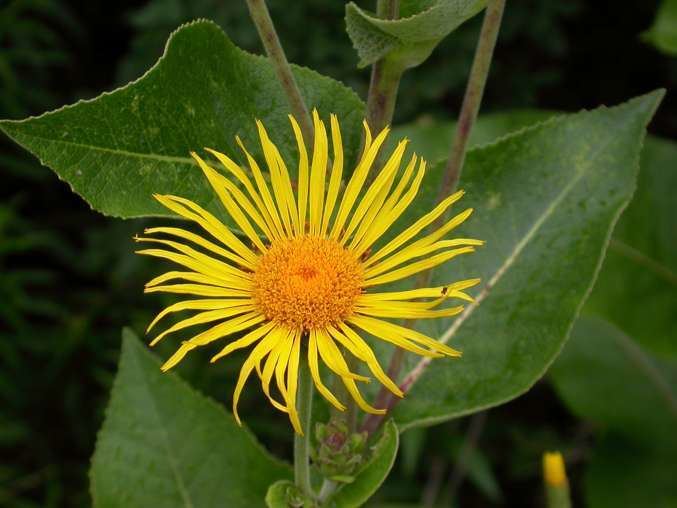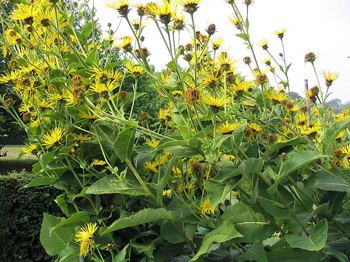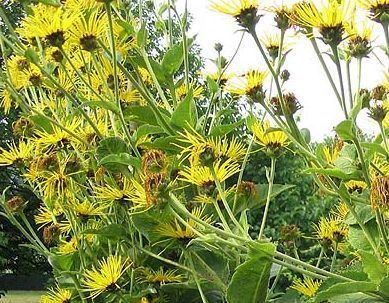Higher classification Inula | Tribe Inuleae Scientific name Inula helenium Rank Species | |
 | ||
Similar Inula, Tussilago, White horehound, Norwegian angelica, Mullein | ||
Plant medicine series elecampane
Elecampane (/ˌɛlɪkæmˈpeɪn/), Inula helenium, also called horse-heal or elfdock, is a widespread plant species in the sunflower family Asteraceae. It is native to Europe and Asia from Spain to Xinjiang Province in western China, and naturalized in parts of North America.
Contents
- Plant medicine series elecampane
- Elecampane elf wort medicine harmonic arts
- Description
- Folklore
- Uses
- Chemical constituents
- References

Elecampane elf wort medicine harmonic arts
Description
Elecampane is a rather rigid herb, the stem of which attains a height of about 90–150 cm (35–59 in). The leaves are large and toothed, the lower ones stalked, the rest embracing the stem; blades egg-shaped, elliptical, or lance-shaped, as big as 30 cm (12 in) long and 12 cm (4.7 in) wide. Leaves are green on the upper side with light, scattered hairs, but whitish on the underside because of a thick layer of wool. The flower heads up to 5 cm (2 inches) broad, each head containing 50-100 yellow ray flowers and 100-250 yellow disc flowers. The root is thick, branching and mucilaginous, and has a bitter taste and a camphoraceous odor with sweet floral (similar to violet) undertones.
Folklore
The plant's specific name, helenium, derives from Helen of Troy; elecampane is said to have sprung up from where her tears fell. It was sacred to the ancient Celts, and once had the name "elfwort".
Uses
In France and Switzerland it is used in the manufacture of absinthe.

The root was employed by the ancients, mentioned in Pliny, Natural History 19.29 both as a medicine and as a condiment, and in England it was formerly in great repute as an aromatic tonic and stimulant of the secretory organs. It is mentioned in an 1817 New-England almanack as a cure for hydrophobia when the root is bruised and used with a strong decoction of milk. It is used in herbal medicine as an expectorant and for water retention.
Chemical constituents

Besides the storage polysaccharide inulin (C6H12O6[C6H10O5]n), a polymer of fructose, the root contains helenin (C15H20O2), a stearoptene, which may be prepared in white acicular crystals, insoluble in water, but freely soluble in alcohol. When freed from the accompanying inula-camphor by repeated crystallization from alcohol, helenin melts at 110 °C.
